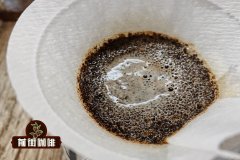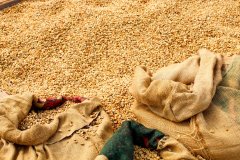Props that need to be prepared for coffee cup testing
Cup Test Preparation Items:
Cup test sample (blue bean dish)
Although it is coffee beans, but it is recommended to roast into the bag 8 hours after the cup test, if it has exceeded it does not matter, some coffee beans even until the third or fourth day after the flavor will be stable, this depends on everyone sharp tongue to judge.
cup measuring bowl
Whether you use a sea bowl, a high-end whiskey crystal glass, or a special wine jar for Xiao Feng, it doesn't matter, but remember to make the ratio of water powder 1:18, for example>> 8.25g powder: 150ml water.
Note: Prepare one more cup for water (transparent glass for water and white ceramic bowl for cup sample)
cup spoon
If you can, silver cup spoon is certainly good, if not, the general stainless steel spoon can also be made do with, can help you sip smoothly.
grinder dosers
EK is of course the best (can laugh), if home use, do not force too much equipment, the less the target fine powder grinder coffee particles, the more uniform the better.
Coffee powder sieve #20, this is usually used for green bean evaluation (about 4~5 grinding scale of Pegasus 900N), if it is extraction cup test adjustment, it can be adjusted according to its own customary scale or different scales.
Spit up.
Each person has a sanitary spit cup, and the coffee liquid after everyone's evaluation seems strange to spit together.
timing tool
stopwatch, watch, cell phone, hourglass are OK.
Cup test props preparation is generally OK like this!
Cup Test Procedure:
Step 1: Weigh each cup of coffee beans (you can prepare an extra cup of coffee beans as a "bean washing", wash off the residue of different batches of coffee beans in the bean grinder), grind to the required cup size and smell the dry coffee powder. (If you haven't started yet, remember to cover the board to avoid excessive contact with the air)
Step 2: Contact hot water to start timing, inject 93 degrees hot water, start evaluating wet aroma.
Step 3:3~5 minutes to start breaking slag, fishing slag, remember to smell the aroma when breaking slag.
Step 4: After exposure to hot water for about 10 minutes, or without burning the mouth, start sipping.
As for sipping, in addition to sucking hard, you will need to inhale the coffee liquid through your upper teeth and aerosolize it, so you can feel more coffee smell.
Conclusion:
The above steps are relatively complicated, and to deal with different cup test requirements, you can also adjust the details of the cup test, for example: the bean roaster himself may make different roasting samples for the beans from the same production area, or samples from different roasting methods to test different coffee bean flavor ratings and determine the roasting degree and roasting method; Barista adjustments can be made to individual coffee beans, powder particles, or water temperature to test the cup to find the flavor preferred by the brewer.
Cup testing can be a way to make a lot of pushback, you can do a flavor test at each coffee change link, trying to understand the impact of each link change on the coffee. Therefore, I am very happy that cup tests are becoming more and more popular in the industry. As cup tests become more and more popular, it indirectly means that communication language is becoming more and more smooth.
Important Notice :
前街咖啡 FrontStreet Coffee has moved to new addredd:
FrontStreet Coffee Address: 315,Donghua East Road,GuangZhou
Tel:020 38364473
- Prev

The method of maintaining coffee filter by filter paper, filter screen, filter cloth and other coffee powder filter materials
Of course, a pot of coffee with charming aroma should be equipped with elegant coffee utensils. When it comes to so many kinds of coffee utensils, why do some people prefer those utensils? today we are going to talk about his favorite utensils. What magic can change the coffee he brews? use simple words and principles to tell you how to choose a filter as your brewing tool.
- Next

Treatment of raw coffee beans and fermented coffee by sun drying, honey treatment and washing
Many people enjoy coffee without thinking about why it is so delicious. Drinking coffee is more than just pouring coffee powder into the coffee machine and pressing the button. Coffee comes from a kind of fruit called coffee fruit. Coffee beans are actually the seeds of coffee fruits. People need to remove, dry and ferment the peel and pulp in order to get coffee beans, and then coffee beans will be roasted and packaged.
Related
- Beginners will see the "Coffee pull flower" guide!
- What is the difference between ice blog purified milk and ordinary milk coffee?
- Why is the Philippines the largest producer of crops in Liberia?
- For coffee extraction, should the fine powder be retained?
- How does extracted espresso fill pressed powder? How much strength does it take to press the powder?
- How to make jasmine cold extract coffee? Is the jasmine + latte good?
- Will this little toy really make the coffee taste better? How does Lily Drip affect coffee extraction?
- Will the action of slapping the filter cup also affect coffee extraction?
- What's the difference between powder-to-water ratio and powder-to-liquid ratio?
- What is the Ethiopian local species? What does it have to do with Heirloom native species?

